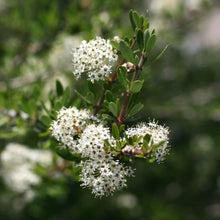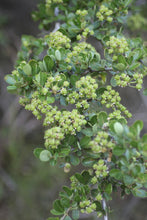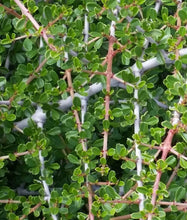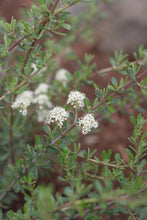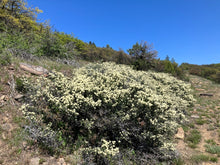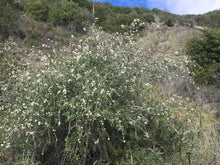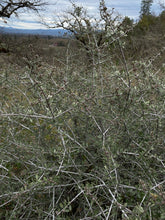
Ceanothus cuneatus
Buckbrush is a large evergreen shrub ideal for sunny, dry areas of your habitat garden. In late spring and early summer, you’ll elate in its profusion of small, fragrant white flowers that envelop the branches, attracting pollinators. By fall, the flowers evolve into seeds that become food for birds and small mammals. Like other Ceanothus species, it fixes nitrogen in the soil, controls erosion, provides exceptional refugia habitat for birds and is drought tolerant and deer resistant once established.
- Plant type/canopy layer: evergreen, perennial, large shrub
- Size at maturity: 3'-11' tall, 3'-11' wide
- Light requirements: full to mostly sunny
- Moisture requirements: dry, well-drained soil
- Bloom time: May - June
- Growth rate/ease: fast growing, easy to grow
- Wildlife support: nectar source for adult butterflies, bees and other insect pollinators, attracts and supports beneficial insects/pest eating insects, caterpillar host plant and larval food source, attracts and supports hummingbirds, branches provide cover and seeds provide food for birds
- Native habitat/range: Common in the understory of forest edges and openings in much of western OR and CA. Portland Plant List - yes.
- Special features & uses: evergreen, wildlife favorite, nitrogen fixation and soil remediation, erosion control, drought tolerant, deer resistant, pollinator garden, rock garden, open woodland garden, hedgerow
Gardening with Buckbrush: This attractive shrub will thrive in full-to-partly sunny areas with dry, rocky soils that have excellent drainage. It’s a stunning addition to pollinator hedgerows, open slopes and woodland edges where it will fix nitrogen and mitigate erosion. Since it is fast-growing, it also serves as a pioneer species in new landscapes.
Photo Credits 1 & 4 (flowers/branches): Karli Del Biondo, Beetles and Bees
Photo Credit 2 (flower buds): © Cricket Raspet, some rights reserved (CC-BY)
Photo Credit 3 (leaves close): © Alex, some rights reserved (CC-BY)
Photo Credit 4 (wild hedge): © Aaron Liston, some rights reserved (CC-BY)
Photo Credit 5 (mature flowering form): © Wendy Herniman, some rights reserved (CC-BY)
Photo Credit 6 (winter look): © Daniel Kennedy, some rights reserved (CC-BY)







